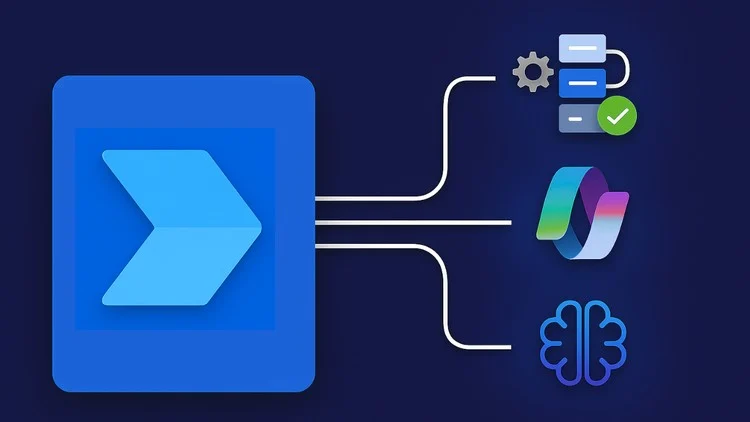
Building e-commerce stores with voice commands allows customers to interact with online shops using simple speech, making the shopping experience faster and more accessible. By integrating voice recognition technology, businesses enable users to search for products, place orders, and manage purchases without typing or clicking. This hands-free approach improves convenience and meets growing consumer expectations for streamlined digital interactions.
Voice commerce leverages AI-powered assistants like Amazon Alexa, Google Assistant, and Siri to interpret natural language, helping shoppers find products and complete transactions using their voice. This technology not only enhances user experience but also opens new opportunities for e-commerce platforms to reach a broader audience, including those with accessibility needs.
Adopting voice commands in e-commerce requires careful planning to optimize search algorithms and payment processes to ensure a smooth, intuitive interaction. As voice commerce becomes a key part of online retail, understanding how to build stores that support voice-driven shopping is crucial for staying competitive.
Understanding Voice-Enabled E-Commerce
Voice-enabled e-commerce uses voice commands to interact with online stores, changing how consumers search, select, and purchase products. This technology impacts both the shopping experience and business operations by improving accessibility, convenience, and efficiency.
How Voice Commands Are Transforming Online Shopping
Voice commands replace traditional typing or clicking with spoken instructions. Shoppers use devices like Amazon Alexa, Google Assistant, or Siri to browse products, compare prices, and place orders hands-free.
This method speeds up transactions and simplifies navigation, especially for users with disabilities or when multitasking. Voice commerce also integrates with smart home devices, enabling ordering without screen interaction.
Businesses must optimize their platforms for voice recognition technology, ensuring product descriptions and search functions are voice-friendly. This adaptation improves customer engagement and reduces friction during the purchase process.
Benefits of Voice Commerce for Users and Businesses
For users, voice commerce enhances convenience by allowing quick searches, reordering, and payment through simple commands. It supports hands-free interaction, benefiting those with mobility challenges or busy lifestyles.
Businesses gain faster transaction cycles, increased customer retention, and access to new demographics. Voice data provides insights into consumer behavior, enabling personalized marketing and improved customer support through real-time voice assistance.
Voice-enabled customer support can resolve issues instantly, reducing wait times. Additionally, voice commerce can streamline checkout processes, cutting cart abandonment rates and boosting sales.
Emerging Trends in Voice-Driven E-Commerce
Integration with AI-powered assistants is advancing, making voice interactions more natural and context-aware. Conversational commerce, combining voice with messaging apps, offers seamless multi-channel shopping experiences.
Retailers are deploying voice-enabled search optimized for local and natural language queries, improving product discoverability. Voice payment solutions are becoming more secure, encouraging adoption.
There’s growing use of voice analytics to tailor recommendations and inventory management. This trend moves voice commerce beyond simple commands to a comprehensive shopping ecosystem that interacts dynamically with users.
Core Technologies Behind Voice Command Stores
Building e-commerce stores that respond to voice commands relies on specific technologies that capture, interpret, and process spoken input. These components work together to enable seamless interaction between users and shopping platforms through natural conversation and device integration.
Speech Recognition Systems
Speech recognition systems convert spoken words into digital text. They use microphones to capture sound and then break down the audio into phonemes, the smallest units of sound. This process is enabled by acoustic models and algorithms that match these sounds to known language patterns.
Accuracy is critical, especially in environments with background noise. Modern systems employ deep learning techniques to improve recognition in real time, adapting to accents and speech variations. This ensures users can place orders or request product information without repeating commands.
Natural Language Processing for Orders
Natural language processing (NLP) interprets the meaning behind users’ spoken phrases. It transforms raw transcriptions into intent and entities, such as item names, quantities, or payment methods. This understanding enables the system to handle diverse requests beyond simple keywords.
NLP allows the platform to handle queries like “Order two red shirts in medium size” or “Add gluten-free bread to my cart.” It supports dialogue management, enabling follow-up questions or clarifications. This improves the shopping experience by making voice interactions more conversational and accurate.
Integrating Voice Assistants with E-Commerce Platforms
Voice assistants like Amazon Alexa, Google Assistant, and Apple Siri serve as intermediaries between customers and e-commerce stores. Integration requires APIs and software development kits (SDKs) that connect the assistant’s interface with the store’s inventory, payment gateways, and order management systems.
This linkage ensures real-time updates on product availability, pricing, and order status. It also enables secure payment processing through voice authentication or linked accounts. Developers must focus on seamless data exchange and privacy compliance to build trust and maintain smooth operation during voice-driven interactions.
Planning Voice Command Features for Your Store
Designing voice command capabilities begins with a thorough understanding of how customers interact with the store and what specific tasks they need to complete. Equally important is ensuring that voice features cater to diverse user groups, maintaining simplicity and accessibility across all customer segments.
Identifying User Journeys and Use Cases
The initial step is mapping out user flows specific to voice interactions. This includes scenarios such as searching for products, adding items to a cart, checking out, and tracking orders—all through voice commands. Each flow should be intuitive, minimizing the need for multiple steps or complex phrasing.
Focusing on common commands customers might use helps prioritize features. For example, voice queries like “Find red shoes size 9” or “Add the latest smartphone to my cart” should return accurate results quickly. Testing these journeys identifies potential friction points and lets developers refine responses and voice recognition accuracy.
Creating distinct use cases around different purchase stages improves functionality and user satisfaction. For instance, voice commands suited for browsing differ from those optimized for completing a purchase, and both require tailored interaction designs.
Accessibility and Usability for Diverse Shoppers
Incorporating accessibility into voice commerce involves designing for users across various ages, abilities, and tech literacy levels. Voice commands should recognize diverse accents, speech impediments, and natural language variations to be truly inclusive.
Clear prompts and feedback, such as confirming product selections or providing concise order summaries, assist users in understanding what the system has processed. This reduces errors and builds trust in the voice interface.
Simplicity in command structure is essential. Avoid requiring complex phrasing or multi-step instructions without clear guidance. Offering alternative interaction modes, such as touch or text, alongside voice supports users who might face challenges with voice-only navigation.
Ensuring compatibility with screen readers and other assistive technologies reinforces the store’s accessibility commitment and widens audience reach.
No-Code Solutions for Voice-Powered E-Commerce
No-code platforms simplify creating voice-enabled e-commerce stores by removing the need for traditional coding. They enable rapid development, testing, and iteration, especially useful for launching a minimum viable product (MVP). Key options like imagine.bo focus specifically on integrating voice commands into shopping experiences efficiently.
Overview of No-Code Platforms
No-code tools allow developers and non-developers alike to build functional voice commerce applications without writing code. These platforms provide drag-and-drop interfaces and pre-built modules for voice recognition, user interaction, and transaction handling.
They accelerate time-to-market by enabling rapid prototyping and customization. Users can create and deploy AI-powered voice assistants capable of handling customer service, product search, and purchases. The ease of use promotes experimentation and improves voice AI adoption in e-commerce.
Examples include Synthflow and Bubble.io, which support multi-function voice assistant creation. These tools reduce dependency on technical teams, making voice commerce more accessible.
Using imagine.bo to Build Voice-Enabled Stores
imagine.bo is a no-code platform tailored for voice commerce, enabling users to design and deploy voice-interactive e-commerce sites swiftly. It emphasizes ease of integration with existing e-commerce backends and supports AI-driven voice assistants.
imagine.bo offers templates and workflows to manage product catalogs, shopping carts, and payment via voice commands. Its interface facilitates building an MVP quickly, helping businesses test voice commerce features without heavy upfront investment.
The platform supports customization of voice responses and commands, allowing brands to deliver tailored customer experiences. imagine.bo’s focus on voice-first design reduces friction in setting up scalable voice commerce solutions.
Comparing No-Code and Traditional Development
Traditional voice commerce development requires specialized coding skills and longer development cycles. It offers higher customization but involves greater cost and technical complexity.
No-code solutions like imagine.bo provide speed and lower costs, especially valuable for MVPs and startups testing voice commerce concepts. However, they may limit deep customization or integration beyond the platform’s scope.
A comparison table highlights key differences:
| Aspect | No-Code (imagine.bo) | Traditional Development |
|---|---|---|
| Development Speed | Fast (days to weeks) | Slow (weeks to months) |
| Customization | Moderate, via templates | High, full control |
| Technical Skill | Minimal required | High, expert developers |
| Cost | Lower upfront cost | Higher initial investment |
| Scalability | Good for MVP & growth | Best for complex solutions |
Choosing between the two depends on project requirements, timeline, and budget. No-code platforms excel in rapid deployment and ease of use.
Designing Conversational Shopping Experiences
Effective voice commerce relies on intuitive interaction and personalized responses. Building these experiences requires attention to interface design and leveraging AI to tailor shopping journeys.
Crafting Effective Voice User Interfaces
A successful voice user interface (VUI) hinges on clarity and natural language understanding. It must anticipate user intent and allow simple, conversational commands without confusion or excessive prompts.
Design thinking plays a critical role here, focusing on user needs and behaviors to create streamlined commands. For example, voice commands like “Add running shoes to my cart” should trigger accurate product selection and confirmation. Avoid complex jargon or too many options in one command to reduce user frustration.
Testing conversational flows through an AI-generated blueprint helps identify bottlenecks in dialogue. This structured framework guides developers in refining command recognition and response accuracy, ensuring smooth navigation from search to checkout.
Personalization Through AI and Data
Personalization strengthens voice commerce by offering relevant recommendations and tailored interactions. AI processes user data, such as past purchases and browsing history, displayed in an analytics dashboard, to customize responses.
For instance, if the system recognizes frequent buyers of fitness gear, it can proactively suggest new arrivals in that category when prompted by voice. Real-time analytics enable dynamic adjustment of offers and promotions.
Combining AI-driven insights with conversational design creates seamless, individualized shopping paths. This reduces cart abandonment and improves customer satisfaction by making interactions feel more human and relevant.
Ensuring Security and Compliance in Voice Commerce
Security and compliance are critical when building voice-enabled e-commerce stores. Protecting user data and meeting regulatory requirements ensures trust and prevents costly breaches. Strong safeguards around data handling, user authentication, and system integrity must be integral parts of the platform.
Data Privacy and User Consent
Voice commerce platforms must comply with privacy laws like GDPR to safeguard personal data. Users should receive clear information on how their voice data is collected, stored, and processed. Explicit user consent is essential before any data processing can occur.
Storing minimal data and anonymizing sensitive information reduces exposure from potential breaches. Transparent privacy policies and easily accessible settings for users to manage permissions enhance compliance and trust. Voice commands that involve payments or sensitive actions should verify identity through passcodes or biometric options.
Frequent audits of data handling procedures and third-party integrations help maintain adherence to privacy standards. Companies benefit from documenting user consent flows and updating these processes to reflect evolving regulations.
Implementing Security Standards and Best Practices
Voice commerce developers must adopt rigorous security frameworks such as SOC2 to assure system reliability and data protection. Regular security checks including penetration testing and vulnerability assessments identify and mitigate risks early.
In-built encryption for voice data and transaction details is mandatory to prevent interception and unauthorized access. Multi-factor authentication should protect high-risk interactions like order confirmation or payment authorizations.
Designing devices and software with a security-first approach helps prevent exploitation. This includes secure boot processes, firmware updates, and continuous monitoring for suspicious activity.
Integrating AI-driven fraud detection systems enhances threat response by flagging unusual voice commands or transaction patterns. Clear logging of user activity supports forensic analysis and accountability in case of incidents.
Scaling and Deploying Your Voice-Powered Store
Efficient deployment and scaling are essential to handle increasing user demand and maintain responsive voice interactions. Choosing the right cloud infrastructure and preparing for traffic growth ensures a stable and smooth customer experience.
Infrastructure Options: AWS, GCP, Vercel
AWS, GCP, and Vercel each provide reliable platforms for hosting voice-powered e-commerce stores with scalable infrastructure.
- AWS offers extensive services including Lambda for serverless functions, API Gateway, and managed databases. It supports seamless scaling and high availability, making it well-suited for stores with fluctuating demand.
- GCP provides similar flexibility with Cloud Functions, App Engine, and BigQuery for data analytics. It excels in AI integration, which is valuable for voice recognition and processing.
- Vercel focuses on front-end deployment with automatic scaling and edge functions to reduce latency. It is particularly efficient for fast-rendering static and dynamic web content.
Choosing depends on specific needs such as serverless capabilities, AI tools, and global performance.
Preparing for Traffic and Growth
Planning for traffic surges requires load testing and monitoring real-time voice command processing. Voice AI can generate unpredictable traffic spikes during promotions or seasonal peaks.
Implement auto-scaling policies to adjust resources dynamically. Use caching strategies and CDN integration to minimize delays, especially in voice command responses. Logging and analytics help detect performance issues early.
Regularly update voice models to improve accuracy without affecting uptime. Infrastructure must support rapid deployment cycles to incorporate these updates continuously.
Professional Support and Maintenance
Maintaining an e-commerce store with voice command capabilities requires specialized knowledge and continuous attention. This includes access to expert technical support and regular updates to ensure smooth operation and security.
Leveraging Expert Backup and Support
Voice commerce platforms demand expertise in both backend systems and voice assistant integrations. Engaging senior engineers and support teams familiar with AI-driven voice interfaces ensures rapid troubleshooting and minimizes downtime.
Professional support typically covers issue resolution ranging from voice recognition errors to payment gateway problems. It also provides timely updates on security patches and compatibility with evolving voice assistant APIs like Alexa or Google Assistant.
Access to dedicated expert support means the store can respond quickly to user experience issues, reducing customer frustration. Support contracts often include monitoring services to detect and fix errors before they affect buyers.
Ongoing Store Optimization and Upgrades
Voice commerce technology evolves rapidly, requiring ongoing improvements to maintain functionality and competitive edge. Regular optimization addresses changes in voice assistant behavior, search algorithms, and user interaction patterns.
Upgrades may involve refining voice commands for clarity, improving natural language processing, or integrating new features like personalized recommendations. Continuous testing is necessary to ensure commands execute correctly in diverse environments.
Retention of professionals skilled in voice technology allows proactive adaptation to updates in platforms like Siri or Alexa. This also covers implementing feedback from customer behavior analytics to enhance the overall shopping experience.
| Key Activities | Purpose |
|---|---|
| Voice command refinement | Improve recognition and accuracy |
| Security updates | Protect against vulnerabilities |
| Compatibility testing | Ensure integration with assistants |
| Feature enhancements | Add new capabilities for users |
Ongoing maintenance secures seamless interaction and helps the store stay aligned with industry standards and customer expectations.
Pricing, Beta Access, and Getting Started with imagine.bo
imagine.bo offers controlled beta access to ensure a smooth onboarding experience. Its pricing includes a clear structure with free initial use, followed by paid plans tailored to varying business needs.
Joining the Private Beta and Waitlist
Users must join a private beta by signing up on an official waitlist. Access is granted gradually to maintain quality and control during rollout. This approach allows imagine.bo to manage demand and incorporate feedback effectively.
Joining the waitlist is simple, requiring only basic information. Once accepted, users can begin building apps with the platform’s no-code chat interface, which emphasizes speed and simplicity.
Understanding Pricing Models and Plans
imagine.bo provides a free tier to start quickly without upfront costs. This includes limited access to features and is ideal for testing ideas.
Paid plans offer scalable options, adapting to the size and complexity of projects. Pricing is transparent, with clear tiers and pay-as-you-go flexibility for enterprises needing more resources.
| Plan Type | Description | Ideal For |
|---|---|---|
| Free Tier | Basic features, limited app launches | Beginners, testing |
| Paid Plans | Advanced tools, increased limits, priority support | Growing businesses, professionals |
This structure balances accessibility and scalability, helping users ship apps in days rather than months.
Use Cases and Opportunities for Founders and Agencies
Voice command technology in e-commerce presents clear benefits for product development and client management. It enables faster validation of concepts and efficient scaling across multiple stores, addressing specific challenges faced by founders, solo makers, and agencies.
Building MVPs for Market Validation
Founders and solo makers benefit from voice-enabled MVPs by quickly testing market demand with minimal upfront investment. Voice commands simplify interactions, allowing users to browse, select, and purchase products hands-free, which increases accessibility.
Creating a voice-based MVP helps gather real user data on shopping habits and preferences, guiding product iteration. Rapid prototyping tools and platforms now enable easy integration of voice interfaces, shortening development cycles.
This approach reduces the risk of building fully featured platforms without proof of concept. By validating early, founders can make data-driven decisions to refine features or pivot, saving time and resources.
Running Multiple Client Stores as an Agency
Agencies managing multiple e-commerce clients can leverage voice technology to streamline operations and differentiate services. Voice commands enable faster product updates, inventory checks, and customer interaction handling across stores.
Implementing standardized voice AI can automate repetitive tasks like answering FAQs and processing orders. This frees agency teams to focus on personalized marketing and growth strategies for clients.
Furthermore, agencies gain a competitive edge by incorporating voice commerce features that enhance user experience. Voice interfaces also support accessibility standards, broadening client reach and increasing engagement.




